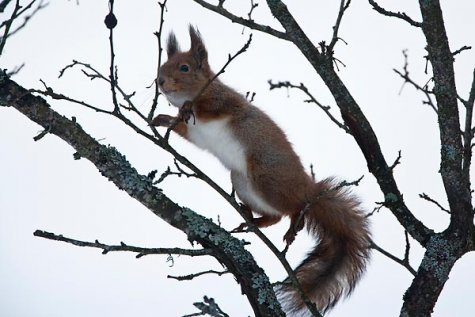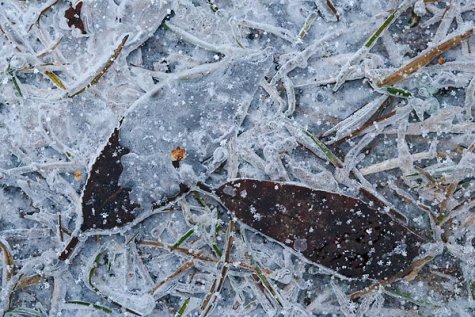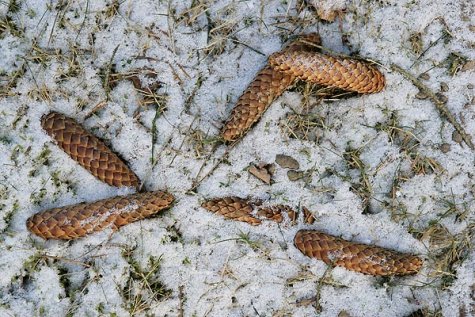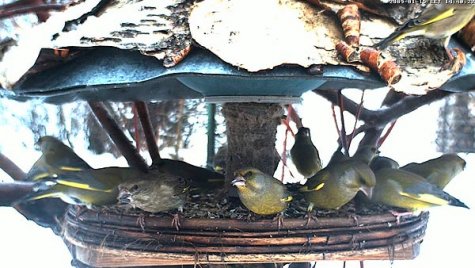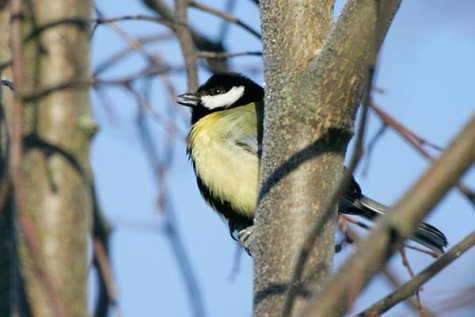Second week of January: black squirrel
“I have been to Saaremaa and seen a black squirrel!“, Looduskalender man Gennadi Skromnov says, talking about this week’s nature notes.
The several degrees above zero in the beginning of the week made the alert ones in the plant kingdom believe that true Spring had arrived, and snowdrops in Western Estonia and even in Tallinn didn’t think it too early to open their blossoms. Already on Monday, before my last week’s story was published, Helen Holter sent a photo where the snow-white nose of a daring snowdrop peeks out of the gound. On Thursday an e-mail arrived saying: “In full bloom now!“ And truly, the Spring-time bell that looked at me from the attached photo seemed to tinkle about Spring. Encouraged by this I went out to look for Spring myself, now that I was near Haapsalu at a course. As I was telling the home people about Spring in Western Estonia, I groped around among the Hepatica, sinilill, leaves under the spruces – and – yes, there it was, truly, this blue-eyed thing – on a centimetre-long stem was a still downy bud, with a glimpse of blue peeping out from it.
Before winter crest day there was shepherd’s purse, Capsella, in flower on the Peipsi shore, and nice brown mushroom caps were lined up on the shore grass. Which species precisely we did not manage to determine, botanist Tõnu Ploompuu writes: “These two-centimetre high cap mushrooms seem to be velvetshanks, Flammulina velutipes – they grow on wood – the same as Mall Vaasma mentioned in Sakala ajaleht in the beginning of the week, but they may also be Tubaria furfuracea, Scurfy Twiglet Mushroom, or it may even be something else. I myself saw on Monday and Tuesday in Läänemaa even smaller brown capbearers – tiny Bonnets, Mycena species, that have real endurance – with suitable humidity they may last one-two-three months. That they dry out in the cold I haven’t noticed. I haven’t noted either anything in literature about them recovering after having been dehydrated, as many of the Marasmius species do among the cap mushrooms. These fruiting bodies cannot have developed in just a few days, so they must be mushrooms that have survived the cold and dry days in between successfully. This must be true too of the velvetshanks. Their larger mass protects them better from complete drying out, but drying is surely lethal for them. The velvetshank keeps “fresh“ and vital for some months or even longer in the cold during winter, but in warmer weather they go bad fast (in a few weeks ...). In a spring drought they easily catch “sunburn“.
Looduskalender opened a third cinema this week – through the web camera you can follow the action at a bird feeder in Estonia’s winter capital, Otepää. My webclicks have mostly brought greenfinches and domestic doves to the screen, but there is more birdlife there. In the bird community the bird of the week was the great tit – all those gentlemen in yellow shirts and black ties started a very lively discussion of summer fashions this week – sitsikleit, summer dress. And with calls reminding of ancient policeman’s whistles the blue tits joined in. It is really amazing that country people have always seen birds as part of us, and tried to find a common language. We all know that the great tits happily sing sitsikleit-sitsikleit, summer cotton dress. To the Swedes the calls of the tits remind of an out-of-order bicycle pump – „tsitsibee“ Anyway, the spring song of great tits in January should not surprise anyone because it is at this time each year that they open their beaks. I always worry that I haven’t been outdoors for long enough when I haven’t heard tits calling before January 20th.
FOR CHILDREN
Quotation:
From winter crest day the coldest and brightest half of winter begins.

